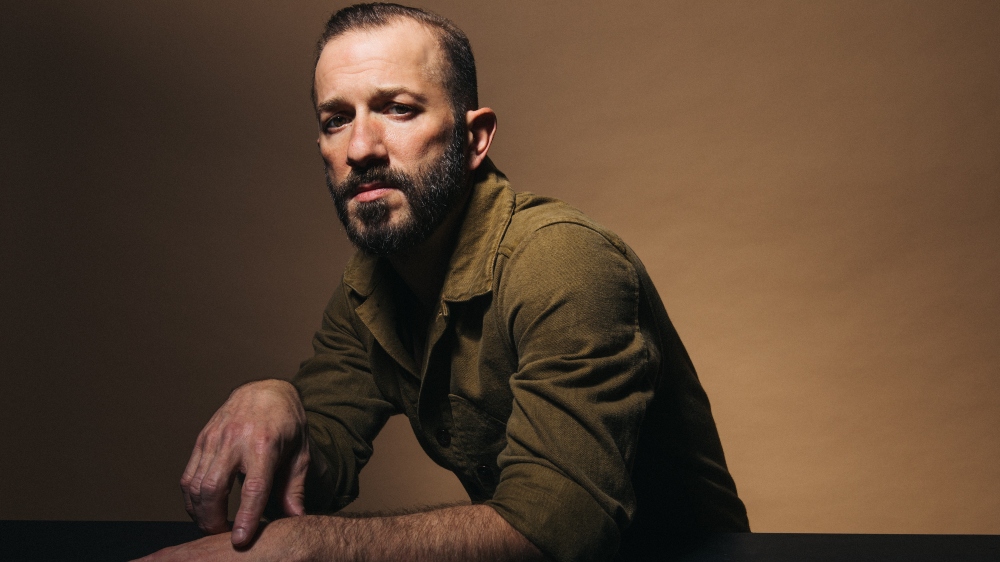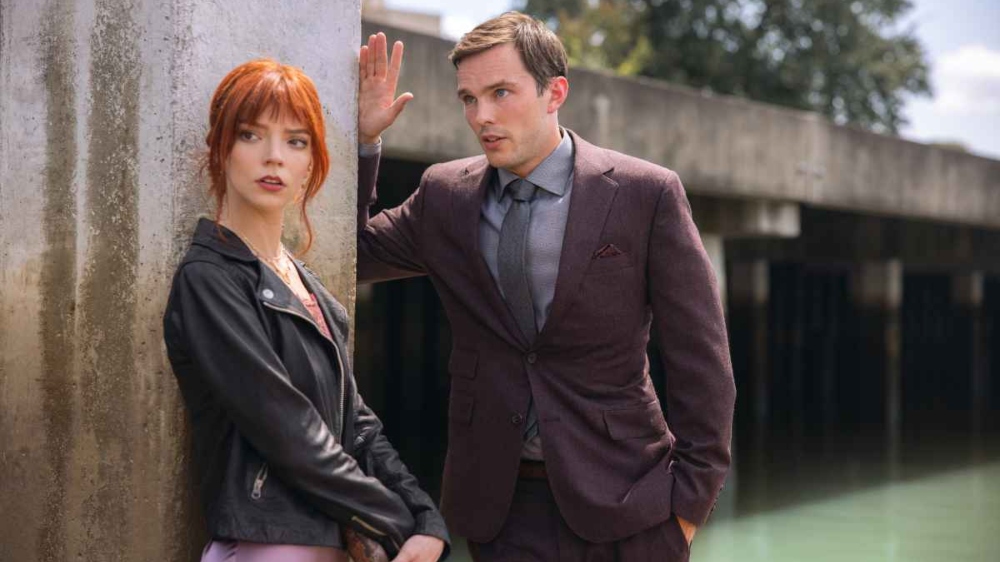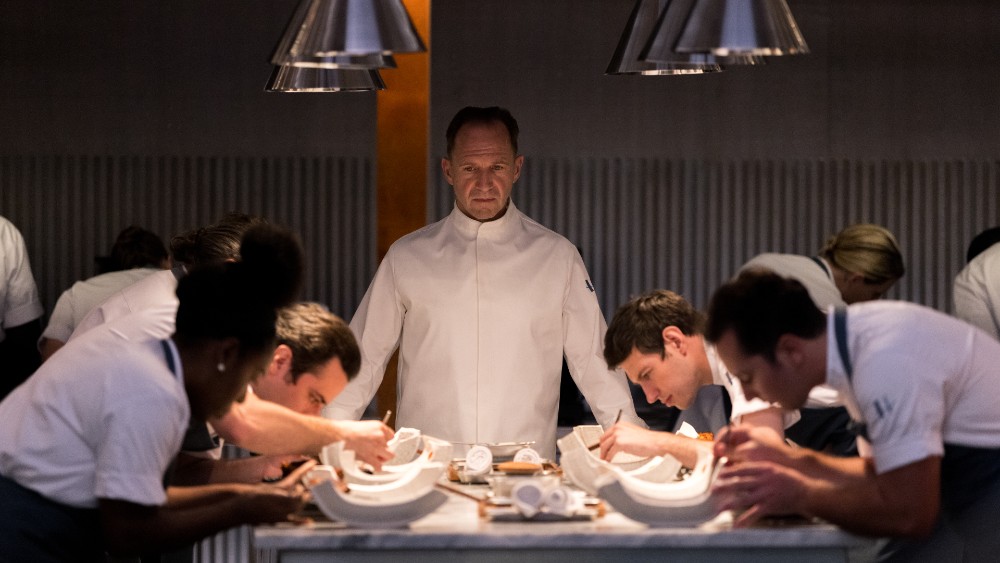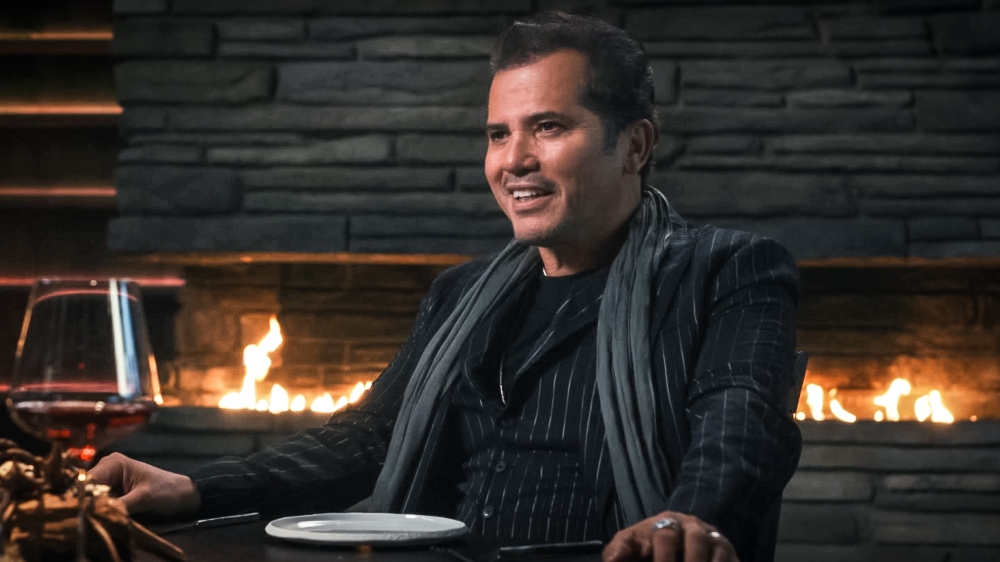The star-studded culinary thriller The Menu is a biting satire set in the world of fine dining. Ralph Fiennes stars as a revered chef who offers his guests a one-of-a-kind experience at his high-end restaurant, Hawthorne, which is located on a remote island.
Anya Taylor-Joy and Nicholas Hoult play two lucky(?) diners who bite off a bit more than they can chew as Chef serves the rest of his guests their just desserts. The film has grossed nearly $50 million worldwide, so it has really struck a chord with adult audiences, just as Colin Stetson‘s music struck a chord with The Menu Director Mark Mylod and Editor Chris Tellefson.
The duo had been using Stetson’s music as temp score during their edit, so when it came time to hire a composer, it only made sense that they would ask him to take the gig, which he was excited to tackle, as it offered him the opportunity to straddle two genres — horror and comedy.
Below the Line recently spoke with Stetson, who discussed his scoring process and revealed the trick to scoring a horror comedy. Where the pandemic brought challenges for other composers, Stetson’s score for The Menu was rather minimal, as the composer mostly did everything himself, although a friend of his would serve as the orchestra at another location.

Below the Line: How did you first become attached to score The Menu?
Colin Stetson: I think Mark [Mylod] and Chris [Tellefson], the editor, had been playing with some of the initial edits and some of my music came into play in the edit and the temp. As it did, and as more did, they started thinking, ‘Oh, maybe we should talk to him,’ and so they got in touch. I was one of, I imagine, many people who were approached about doing music for it. For my part, I was sent a script, and initially, on first reading, it was really just, on its face, exactly the kind of thing that I look for when I’m reading a script — it does not read like anything else. I have not seen that story a dozen times. It’s very lean. It functions more or less perfectly. It does exactly what it needs to do and it does it in a way [that] is really fun and novel. I was hooked from [the] first reading. After that, I dealt with some meetings with Mark and [Producer] Betsy [Koch] initially, and it was, from the get-go, just so much fun, and I knew that it was going to be a good experience. It really has been pretty much as near-perfect as any of these things are.
BTL: I had so much fun watching the film during TIFF in September. Have you had the opportunity to watch it with an audience yet?
Stetson: No. The last time I saw it, I saw it right before [the festival], on the last days of the soundstage of the mix. I saw it so close to, if not at, its fruition, but I’ve not seen it with an audience yet.
BTL: When it comes to your typical scoring process, do you usually start after you read the script, or after you watch footage?
Stetson: What normally happens is, I read a script, and then I’ll have a series of days where I spend time at the piano in the morning, maybe on various other instruments, and I’ll improvise and follow certain inspiration, certain paths, and kind of work different ideas that I was having based on the script. I’ll record those sessions. They can be a half-hour; they can be several hours. I’ll make notes of those recordings and ultimately, some to a lot of the music that ends up being, at least, the foundation for things, comes from those initial sessions. For The Menu, the bulk of the main themes, or at least the DNA there, is from those initial sessions, which I imagined would have happened in December of last year.

BTL: Is there a favorite track that you have on the soundtrack?
Stetson: I kind of have a lot of fun with the entirety of this one. If I was picking favorites, I really do love “The Mess.” It’s the first iteration. It’s the first time where certain things happen. There are three distinct aesthetic themes that come up from that moment and it gets to be this very agitated, really audacious, jagged moment, and at the same time, it still has some mystery to it, [but] it’s still referencing itself as being part of this extravagant meal. I kind of love it as being a pivotal moment in the film and in the score, but also one that gets to, I guess, have a bit of [a] sense of itself in what came before and what’s to come later.
BTL: You’re no stranger to composing scores for horror films but what’s the trick to scoring a horror comedy?
Stetson: For me, this really just is a comedy couched in the function or the vessel of horror. For me, the main throughline — the scaffolding structure that holds this whole thing together [and] really creates the kind of propulsion and the drive to get from point A to point B in this one — [was the] polymetric percussive pizzicato strings — that being the orchestral strings and then the piano strings later. That’s the glue that ties it all together. It also is the thing that — in the first act, when we’re still just kind of there to have this lavish extravagant meal — gets to operate in these delightful, almost innocent, but a little bit cheeky ways. It also then can function later, after a track like “The Mess.” You can utilize the same motifs.
These polymetrics are very math-y, interconnecting rhythmic motifs. They can operate a little bit like train tracks, where you can have something that’s going straight, and then you just simply switch a track and divert it, and the insertion of one of these polyrhythms can really just derail and abruptly turn the whole direction of the action and the narrative.
I saw that when I was reading the script — I saw this as pretty much the perfect tool to utilize in accomplishing all of those different goals. It gets to function as pomp and excitement in the beginning. It gets to be anxiety-producing and rhythmically propulsive throughout the whole of it. It also gets to be something that can trigger, enhance, and deepen comedic moments when necessary. That’s really how I saw that.
A lot of it, then, is also that since you’re dealing with these two different expectations, all of the material from the first act, once we know where we are later on in the film when that stuff comes back, you can bring these back now in a new context, juxtaposed in a different way — whereas in the beginning, there was no humor. Now, in this new context, there’s humor.

BTL: Were there any challenges in recording the score because of the pandemic?
Stetson: No. I’ve always worked this way, so the pandemic has not altered this method at all. I largely work alone and so something like Hereditary, I did entirely on my own. There was nobody else involved. For this, I wrote everything myself and engineered and mixed it all myself, but I do work with an old friend — we went to school together — named Matt Combs. He lives in Nashville and he has his own studio there and just a whole array of stringed instruments. He functions as my orchestra and he’s brilliant. I can write in whatever way I want, sending him MIDI files [and] vocal tracks [and] all these things. He will then clone that with strings. He understands my approach — we’ve been doing this together for years since Color Out of Space, so it’s pretty seamless. That’s it. It’s just here and there, his spot. I believe the only other person on this score was my friend Greg Fox, who came up to my studio here to do a little bit of percussion one weekend.
BTL: You may have already covered it early on, but did you get any sort of direction or notes from Mark Mylod when it came to the score?
Stetson: Oh, certainly. Well, yeah, there are always things that directors are going to want [to be] hands-on [with] and certain things that they want [to be] pushed harder, or the contrary. Generally speaking, since we had a lot of conversations — very detailed ones and very specific ones about the musical approach and things initially — I think that we were very much on the same page in terms of what it was that I wanted to do [and] what it was I was intending to do so that when I started to do that and send him music, that unison played out throughout most of it. More or less, what I was thinking was what he was thinking. We never had any major rewrites or anything that needed doing other than edits changing, and then music having to follow an edit as it shifted.
BTL: What’s it like to now have your name on a film that’s produced by Adam McKay?
Colin Stetson: It’s great. My experience with — like I said, my experience with Mark was fantastic from the get-go. We just got along on so many different levels and then I was working most closely with Betsy over at Adam’s company, and this is where the whole interview is going to be just me gushing, but I cannot speak more highly of them. It was an absolute thrill — just amazing ideas, always good feedback, incredible support throughout, and just always good communication — really present, super helpful throughout the beginning of the process — obviously, the bulk of the working process, but also afterward when it came to dealing with the soundtrack and the release of the soundtrack album and just really going above and beyond. I cannot praise on one hand and thank on the other Betsy and Adam and everybody over there [enough]. The same could be said for everyone at Searchlight. It really was — like I said, from beginning to end, these projects can go a lot of different ways [but I don’t] think that you can really imagine or ask for a better course in which this all played out [in terms of] what I got to do in this — my experience and the whole of it — so I’m very happy.

BTL: How did you first get an interest in composing?
Stetson: I’ve been writing music [and] composing since I was young. Although I did a bit of composition for some theater when I was younger, in my late teens and 20s, the majority of my writing was for different groups that I would lead and write for and obviously, for myself and my solo career, and then the arrangements that I did when I was operating more in the capacity of playing horns and doing arrangements for bands and for singer-songwriters and things over the years. That’s something I’ve always done.
The film aspect to it started in… Alexander Morris was the first director to come to me and asked me to do a score specifically, so sometime around 2010. It certainly was something that I [could] see myself doing, that I’d wanted to do, but also, the fact of — I mean, anybody’s life, we get busy. Inertia is what it is. We tend to see what’s right in front of us. I was no different. I really was just kind of dealing with paying bills, hustling, paying bills, hustling. I really do owe him a huge thanks because he was listening to my solo music and he approached me, saying, ‘I think that you’d be the right voice for this, do you think you’d be interested?’ That was the initial spark for me that proved [to] me that there was interest and that I enjoyed doing it. And so, from that point on, I just opened myself up to that as being something that I was interested in, something that I made time for in my schedule, and then gradually, [it] just kind of snowballed over the years.
BTL: After working on this film, would you ever want to go on such an exclusive fine-dining experience?
Stetson: [laughs] I’ve certainly never gone to one quite so isolated. Nor have I ever been to one that was quite so performative. But yes, I’m sure that I will find myself in pretentious dining establishments in the future.
The Menu is still playing in theaters courtesy of Searchlight Pictures following its world premiere at the Toronto International Film Festival.





